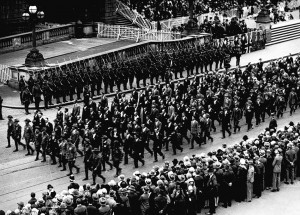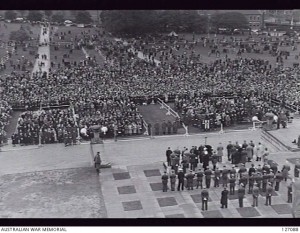ANZAC Day – A History
ANZAC Day – 25 April marks the anniversary of the first major military action fought by Australian and New Zealand forces during the First World War.
 The first remembrance of Gallipoli was held in Melbourne exactly a year after the first landing, when about 380 returned ANZACS marched from near Princes Bridge to a service at St Paul’s Cathedral.
The first remembrance of Gallipoli was held in Melbourne exactly a year after the first landing, when about 380 returned ANZACS marched from near Princes Bridge to a service at St Paul’s Cathedral.
The following year, 400 ANZACS made the same march, and in 1918, Melbourne saw its first big and emotional procession through city streets.
More than 6,000 men, including returned soldiers and AIF recruits, marched from Alexandra Avenue to the corner of Collins and William Streets, where they dispersed.
There was no city march in 1919 or 1920 – although London had a massive parade of ANZAC troops on April 25th, 1919. Infantrymen of the Australian 5th Division marched past the Mansion House, where the salute was taken by the Prince of Wales, Field Marshal Haig and the then Australian Prime Minister, Mr Hughes. Popular fervour was enormous and spectators shinned up the trees to get a better look at the passing troops, led by a band.
The first really big march held in Melbourne was in 1921, and then there was a gap of three years to the second in 1925.
They have been held annually ever since, apart from 1942 when it was cancelled because of the state of the war.
The three elements of Melbourne’s ANZAC Day as it is marked today – the Dawn Service at the Shrine of Remembrance, the striking parade of veterans down Swanston Street and St Kilda Road to the Shrine and the large, open-air public service – appeared only in the 1930s. The Dawn Service was instituted in 1933 at the still incomplete Shrine; the destination of the march was changed from the Exhibition Building to the Shrine in 1936; and the public service, conducted on the Shrine’s southern approaches, was transferred from 1954 to the large northern forecourt which, framed by the flagstaff, the ‘eternal flame’ and the memorial to the fallen of World War II, replaced the original pool of reflection.
The record marching number of 44,600 in the 1946 parade will almost certainly never be equalled.







